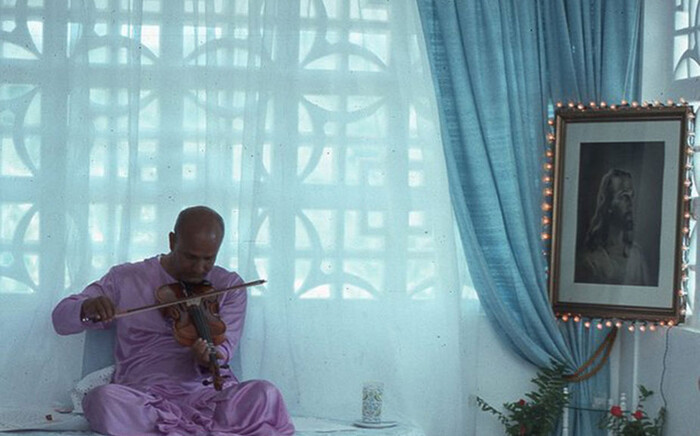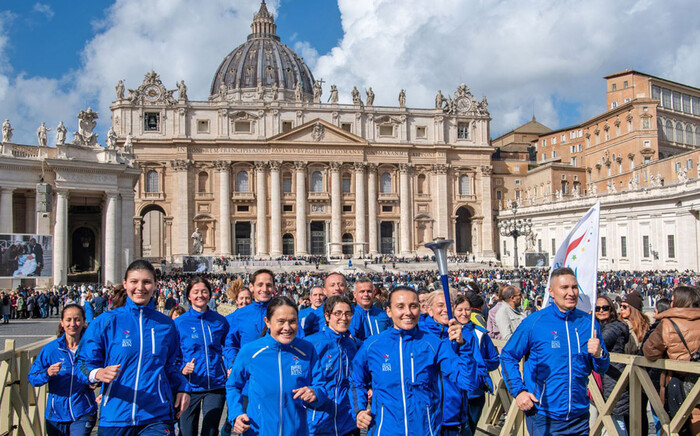
Inspiration Letters 23
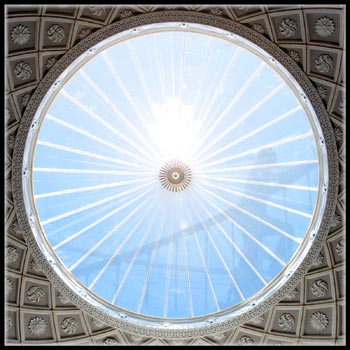
I’d like to begin by excerpting Sri Chinmoy’s own recollections about his first experience with Light, after his beloved mother Yogamaya’s passing:
The Light of My Mother’s Soul:
In our Hindu custom, you cannot keep a dead body for more than a day. In a few hours’ time, the body has to be burnt. My mother died around two o’clock. A few hours later, at about six o’clock, my mother’s body was taken to the family cremation ground and there it was burnt. All our relatives and dear ones were swimming in the sea of sorrow and grief.
I used to sleep with my mother until the age of six or seven. Then I stayed alone in my own room. The night after she passed away, it was pitch dark. We had no electricity; we didn’t use a lamp or candles. My brother Mantu was in another room, and my sisters were upstairs. I was inside a mosquito net.
All of a sudden, the room was flooded with light, and I saw my mother. My mother’s soul was all light. I did not know then what the soul was, but I saw clearly that my mother was blessing me and showing me utmost affection. She was telling me not to worry, saying that everything would be all right. From now on she would help me and bless me in a different way.
I often talk about spiritual, divine light. I have told so many stories in which people have said that they had an experience of light when they were meditating with me; this subject is now an open book to me. I have a free access to the inner worlds where light is always available. But that was my very first experience of divine light.
—Sri Chinmoy, To The Streaming Tears Of My Mother’s Heart And To the Brimming Smiles Of My Mother’s Soul
I think Sri Chinmoy’s poetic sensitivity informs even his prose writing. I like how he sets the atmosphere in this reminiscence. It is the night after his mother’s passing. The setting is a tiny village in India, where there is no electricity or even candles. He is alone in his own room, still in shock from his mother’s death. It is an absolutely moonless, pitch dark night. And then, suddenly, light, a “flood” of light, as embodied by his mother’s divine soul! I really like the phrase, “My mother’s soul was all light.”
This passage reminds me of the first movement of Haydn’s Creation oratorio, “The Creation of Light”- where God says “Let there be Light,” and the evangelist says “And there was light”. Haydn’s symphonic treatment and description of light, of the beginning of light, is one of the most palpable and delightful tone poems in all music.
I’ll never forget the first time I met my philosophy Professor, as a freshman in college. When he walked into the classroom my initial impression was that he was just a short, stubby old Italian man with liver spots on his hands. He was immaculately groomed, though, and wore a nice grey suit. When he started talking, however, I realized that I couldn’t feel my body, and it seemed as if his voice came from a great, unguessable distance. I noticed that everything around him seemed to breathe, as if the chalkboard, table and desks were actually alive!
I approached him after class one day. I told him that I saw and felt light in him and wondered what kinds of spiritual techniques he practised. He told me that he had been a cloistered monk in his youth, and at that time had kept a four-year vow of silence.
“I’ve been praying and meditating for more than forty years,” he explained, “and the spiritual life is just that- a lifelong practice of spiritual disciplines.”
Perhaps one of the reasons we aspire is to reach that state of consciousness where we won’t have to say or do anything to inspire and serve others. Like Dominick, our mere presence alone will give people comfort, joy and inspiration. In the case of the great spiritual Masters, however, we do not even need to be in their physical proximity to get help from them. Sri Chinmoy infused his poetry, art, music and dramatic writings with his profound divinity. By taking his soulful creations seriously, we can grow into his remarkable spiritual presence.
I have been writing down a lot of my memories of Sri Chinmoy recently. I remember how I attended some of his seven hour and thirteen hour meditations in the late nineteen-nineties. Some of these meditations would begin very late at night- sometimes at around midnight or one o’clock in the morning. I remember one meditation that started around one or two o’clock in the morning. Sri Chinmoy meditated so profoundly and powerfully. Then he began playing the piano and then he sang some devotional songs on the harmonium. Then he invited some of the women singers to come up and sing soulful songs in Bengali. At that point, it was about three a.m., I fell fast asleep. When I woke up again, it was very early in the morning, maybe five-thirty- it was already a little light outside, but the sun hadn’t risen yet. Many people around me were snoring softly, while Sri Chinmoy was meditating in front of us in a very deep mood. Then he got up and began walking around the room very slowly in a meditative consciousness. Achyuta walked behind him, a few paces behind. I was so moved to see the Master and one of his dear disciples walking and meditating together in silence. Both of them walked very slowly, and obviously with some pain. Guru and Achyuta circled the room together a few times and then Achyuta sat down, and an elderly woman disciple took his place, as Guru walked and meditated. It was interesting for me, being surrounded by sleeping people, and watching Guru circle the room with a little smile playing on his face, meditating so deeply, followed by one or another of his close disciples. It was almost as if I were alone with the Master, and could give him all of my prayers and devotional feelings with no obstructions at all. I felt waves of divinity emanating from him as he meditated, and I felt that all of my problems, insecurities and self-doubts were melting away, or were carried away in the gentle waves of his infinite compassion and love. I suffer from fear and anxiety so often, but the only times in my life that I have felt totally free from fear and self-doubt were when I was in the presence of my Guru. He really brought out the best in me. I really can’t express what a privilege it was for me to have spent so much time in Sri Chinmoy’s company, and to receive and feel his profound light, stillness and holiness.
Here’s a poem by the Master that I especially like:
The sun is in the west,
A rainbow is in the east,
But I am neither in the sun
Nor in the rainbow.
I am only in God's Satisfaction.—Sri Chinmoy, Seventy-Seven Thousand Service-Trees, Part 1
I think this poem is interesting for many reasons. First of all, I think it was written in Brazil. So, if you know that context the landscape is already set for you- perhaps a modern city bordering the vast Amazon jungle. The time of day is also established- “The sun is in the west” means that it is evening. The fact that a “rainbow is in the east” implies that there has just been a thunderstorm, but now everything is calm and quiet. The fact that the sun is now visible in the west reinforces that sense of tranquility and ease.
Perhaps the evening sun and the rainbow are different aspects of God. I mean, the western sun implies peace and consolation, a rest from efforts. The rainbow in the east implies victory and new hope, new life. On the physical plane, however, neither of these two realities is permanent. The western sun will soon set, and, with it, the rainbow will fade. The poet remarks,”…But I am neither in the sun nor in the rainbow. I am only in God’s Satisfaction.” Perhaps that means that he does not have to depend upon splendidly beautiful moments like this one, with the sun in the west and the rainbow in the east. Being a God-realised Soul, he carries “God’s Satisfaction” with him all the time. Through his complete, permanent identification with God, he sees beauty and divinity all the time and in all things. The peace of the setting sun and the hope and promise of the rainbow will accompany him forever. And that is the true and everlasting Satisfaction.
Welcome to the ‘Light’ issue of Inspiration-Letters!
Mahiruha
Title image: Pavitrata Taylor, Sri Chinmoy Centre Gallery
View: Inspiration Letters as PDF
Luminosity in the Darkest Night
Fairies give joy: inner joy, outer joy. They give joy to sweet, innocent people through dreams. Sometimes, during meditation, they dance around. On a limited scale, they can fulfil wishes. They are always happy.
—Sri Chinmoy, Conversations With The Master
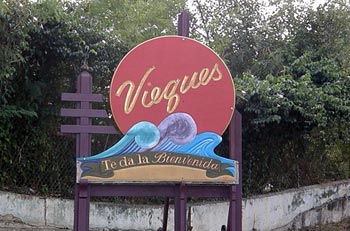 We had arrived on an island off the coast of Puerto Rico. First we came by ferry from the port of Fajardo on the east coast of Puerto Rico. Then in order to witness this hidden wonder of the Caribbean we stayed overnight in a guest house in Esperanza, Vieques. We hopped into a rickety old school bus shortly after sunset and our guided tour was underway. Through the woods, we bumped along until the bus pulled up at the edge of Mosquito Bay—reputed to be one of the best bioluminescent bays in the world.
We had arrived on an island off the coast of Puerto Rico. First we came by ferry from the port of Fajardo on the east coast of Puerto Rico. Then in order to witness this hidden wonder of the Caribbean we stayed overnight in a guest house in Esperanza, Vieques. We hopped into a rickety old school bus shortly after sunset and our guided tour was underway. Through the woods, we bumped along until the bus pulled up at the edge of Mosquito Bay—reputed to be one of the best bioluminescent bays in the world.
Next we boarded a large pontoon boat and headed out into the bay. Luckily the moon was only a slim sliver in the sky because complete darkness was a key ingredient for success in this night tour to see the water come alive with light.
Although the moon was nearly invisible, the stars high above in the sky shone brightly and the tour guides used a laser flashlight to tell us about the constellations as we rode out into the middle of the bay. They also explained about the fragile ecosystem of mangroves along the edge of the shore and the highly salty water in the bay. Both contribute to the large concentration of micro-organisms that light up in the bay when motion stirs the waters. Light pollution—whether natural from the moon or man-made from electric lights—diminishes the visibility of the luminosity in the bay and this rare phenomenon also draws attention to the issue of electric light pollution in the night sky.
With our lesson about the bay’s characteristics complete, the tour guides turned off the boat’s engine in the middle of bay. They announced that we could now climb down the stairs at the end of the boat and descend into the water to experience swimming amidst tiny bioluminescent creatures.
Suddenly I pondered the issue of my glasses! Everything is a blur without them and if I wanted to swim in the bio bay and see the details of the lights in the water I would need to keep my glasses on. With some nervousness, I went in despite not wearing any king of eyeglass strap around my neck or any kind of goggles. I am so glad that I decided to take my chances—the flotation vests that we donned before going into the water kept me buoyed high enough above the water’s surface to easily keep my head above the water.
The words magical and delightful cannot begin to convey how delightful it was to move about in the water and watch the lights sparkle in the darkness wherever the water stirred. It was an experience entirely different than anything I had experienced ever before.
Laughter and squeals of wonder rippled in every direction. We found new ideas of how to move within the water to create the magical light by observing each others’ antics. I pretended that I was playing the piano on the top of the water—fingers dancing on the bay and emitting sparks of light. That was my favorite motion and I repeated it over and over.
Also when I dipped my arm completely into the water and lifted it up above the water, the lights would sparkle in a trail along my skin wherever the water trickled down my arm.
Next old memories of water ballet suddenly resurfaced and I made dainty kicks and sweeping twirls in the water which caused the area around me to light up like a flashlight.
It is nearly impossible to catch the luminescence on camera or film because the bioluminescence needs a canvas of complete darkness to display its glow. It seems only fitting that something so wondrous and other-worldly should be hard to outwardly evidence afterwards.
The charm, delicacy and beauty of this dancing sparkling light surely creates a compelling analogy for spiritual light and serves as a stellar representative for the nuance of meditation and spiritual devotion.
Now I also know how Tinkerbell gets her fairy dust. For sure it is bottled and exported from the Bioluminescent Bay in Vieques off the coast of Puerto Rico. If you want to see for yourself what it must feel like to be a fairy, all you have to do is swim in a bioluminescent bay.
And if you want to imagine what the inner light of spirituality might look like in an outward manifestation, yet again all you have to do is swim in a bioluminescent bay. For days afterward, whenever I meditated I thought of that magical night swim illuminated with fairy dust light. What a recipe for uncanny and magical beauty with luminosity revealed inside the darkest night.
A Soul of Might to Share My Pain
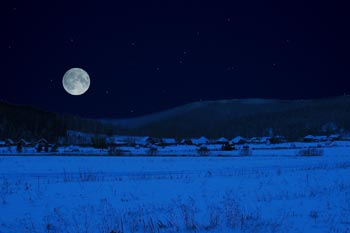 Before I got to know its inner dimensions, light’s outer brilliance had already enchanted me. In the year leading up to my acceptance of the spiritual life it made its presence known on numerous occasions. Like the time on the month long train ride through Europe with three friends, when I found myself alone one morning in a secluded bay of the Mediterranean Sea surrounded by gently rising overgrown cliffs on the picturesque island of Capri on Italy’s west coast.
Before I got to know its inner dimensions, light’s outer brilliance had already enchanted me. In the year leading up to my acceptance of the spiritual life it made its presence known on numerous occasions. Like the time on the month long train ride through Europe with three friends, when I found myself alone one morning in a secluded bay of the Mediterranean Sea surrounded by gently rising overgrown cliffs on the picturesque island of Capri on Italy’s west coast.
I climb down the rocks, drape my towel on its uneven surface and let my body sink into the soothing water. The early morning sun shines down benignly on the gently weltering surface of the sea. As I swim away from the shore with tranquil strokes a thousand twinkling lights suddenly catch my eye. The play of the sunlight on the water reveals countless liquid diamonds, reflecting the sun’s brilliance in ever-changing ways. The unexpected beauty of the scene bewitches my surprised eyes. I feel as if I am swimming in an ocean of freedom, light and beauty. A deep and calm ecstasy takes hold of my heart.
The autumn following that summer. Another island, this time off the coast of Holland’s northern border. I sit in meditation on the edge of a field on a clear and moonlit night. Half an hour ago I escaped the small camper my parents rented for this holiday. Ever since I got acquainted with meditation about a year ago I am regularly overcome with a craving for solitude. Except for the rustling of the wind in the trees surrounding the field all is calm and quiet. As I finish my meditation I walk back across the field and look up towards the full moon. The ivory hued orb emits a soft and subtle silver glow. The moonlight is almost tangible. I feel its softness entering into my heart like silent laughter, bringing with it a profound and overwhelming joy. So pure the sight, so real.
A year later. My life has taken a decisive turn. I have embraced the spiritual life and have become a disciple of Sri Chinmoy. In the beginning the moments of great joy, the soul’s honeymoon celebrating the new spiritual commitment. After a few weeks the initial joy subsides. A difficult period sets in. Again I am engulfed in silence, this time the oppressive, threatening kind. Within me a battle is raging to which I am a barely conscious witness. My meditations yield no results. The harnessed soldiers of fear, self-doubt and insecurity have pinned me to the ground in an iron grip. I am unable to move, helpless.
I’m in a car on the way to a 48 hour race organized by the Cologne Centre, dozing in and out of a fitful sleep. In the background a tape of Sri Chinmoy reciting his poetry is playing. A sudden fragment catches my ear:
A sea of peace and joy and light,
Beyond my reach I know.
In me the storm-tossed weeping night
Finds room to rage and flow.
I listen with rapt attention. This is about me! The poem continues:
I cry aloud, but all in vain.
I helpless, the earth unkind.
What soul of might can share my pain?
Death-dart alone I find.
A soothing feeling of compassion engulfs me. Although my awareness of the inner connection with my Guru has not yet ripened, I clearly feel he is speaking to me—the soul of might sharing my pain, like a hand offered to a drowning man. There is an inexplicable, intuitive understanding that from thousands of miles away he knows what is going on in my life—my struggles, my sufferings. Then suddenly the last lines, like a revelation:
But hark! I hear Thy golden Flute,
Its notes bring the summit down.
Now safe am I, O Absolute.
Gone death, gone night’s stark frown.—Sri Chinmoy, My Flute
A promise. But one I cannot identify with yet. And at the moment I fail to believe I will ever get there. But I have heard, for the very first time, the voice of my Master consoling me. A streak of light appeared in my moonless and starless night.
That this streak was the harbinger of the dawn, I could not know at the time.
Meditation on Light
To see God the Light.
To feel God the Light.
To become God the Light.
This is the only goal
Of my meditation.—Sri Chinmoy, Twenty-Seven Thousand Aspiration-Plants, Part 8
Light can be seen in many ways, as many things. Light can be seen both as our Source and as our highest Goal. This Goal can be named God or the Supreme Reality Itself. Light on various levels: physical, mental, psychic and spiritual, allows for the vision and understanding of life and all of its mysteries. Without light we could not see anything in the physical reality nor could we understand anything on the mental, psychic or spiritual levels.
When we meditate it is like opening up the doors and windows of our house to let in the light so that we can see and enjoy everything around us. If the light is minimal then we do not see the brilliant colors and subtle details of life around us and within us. Only when the light is complete and full can we see and experience the whole spectrum of beauty just as we witness the various colors in a rainbow. The prism of our spiritual consciousness can offer us the deeper experiences of beauty and peace that light has to offer on all levels.
We could also equate light with energy. Just as there are infinite levels of energy, there are also many, many levels of light. Even in the darkness there is some form of light. According to Sri Chinmoy, “We do not grow from darkness to light, but we grow from lesser light to greater light. From bright light to brighter light, from brighter light to brightest light we grow.
Light is our existence. Bright light is our belief in our existence. Brighter light is our faith in our oneness with God. Brightest light is to become conscious and constant representatives of God here on earth and there in Heaven.”
Without even the basic form of light in the physical world things become chaotic. Here is a short story to that effect which happened to me in 1976. I was in New York City with Sri Chinmoy and some of his disciples at a Yoga studio in Manhattan one evening. All of a sudden all the lights went out and someone immediately went to the fuse box to turn it back on. Unfortunately we had no control over this situation as it was a city-wide blackout which was quite serious and lasted until the next day.
Sri Chinmoy was very calm about the whole thing as he had brought a small flashlight-fan that he must have gotten as a gift sometime ago but decided on this night to bring it with him. So he simply turned on the light and proceeded with what he was doing. It was a hot summer day so the air conditioner stopped functioning as well. Sri Chinmoy then turned the little fan on the other end of his flashlight for a little more comfort until we were able to deal with the situation.
Meanwhile, the city outside was frantic as none of the street lights or traffic lights worked and people were trying to reorganize their lives and help each other out. In this case the inner light of wisdom and judgment came to the fore and millions of people somehow survived without light or electricity for about 24 hours in a city which, like most cities worldwide, runs on electricity and light power.
Not only do we need light to see, to live, to grow, but we ourselves come from light and we must keep evolving into higher and higher light. Even though we use a five letter word called ‘light’ to represent a concept, we actually cannot use this mental approach to experience what we truly are on all levels. Light and energy just are the reality we live in and are part of and are meant to be enjoyed by all living beings. Meditation without the interference of mental concepts or thought helps us to be more conscious of this aspect of our reality and to enjoy it in a very pure way. In this pure enjoyment of life and light we experience delight. This delight is our conscious experience of light, our own highest reality which gives us reason to live and evolve and grow.
To quote an aphorism or poem from the Vedas, India’s most ancient and sacred scriptures, “From Delight we came into existence, in Delight we grow, at the end of our journey’s close into Delight we shall retire.”
Light Writings
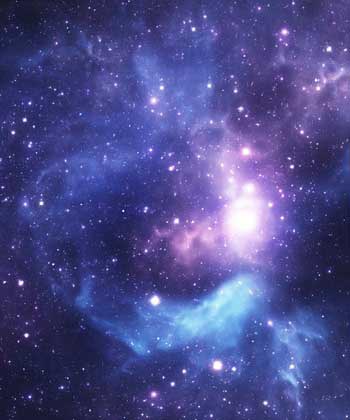 I live in the twenty-first century in a city of a million inhabitants. Light means so very little to us—the flick of a switch, in the most cavalier and thoughtless manner, dispels darkness. I appreciate the so-called modern conveniences of this time and place but deep down somewhere I am an Edwardian farm-worker who has strayed into the wrong millennium. As such, anything that has occurred since 1910 is somewhat alien and disturbing to me. So it is that I lament the passing of reverence for light.
I live in the twenty-first century in a city of a million inhabitants. Light means so very little to us—the flick of a switch, in the most cavalier and thoughtless manner, dispels darkness. I appreciate the so-called modern conveniences of this time and place but deep down somewhere I am an Edwardian farm-worker who has strayed into the wrong millennium. As such, anything that has occurred since 1910 is somewhat alien and disturbing to me. So it is that I lament the passing of reverence for light.
It was Sir Laurens van der Post who reported a conversation between C.G. Jung and a distinguished professor in which Jung asked the professor what ‘fire’ meant to him. “Why, it means energy, of course,” replied the professor.
Sir Laurens goes on the write: ‘For a moment I regretted I had come, so blank and aridly over-intellectual did the answer sound. I thought, dismayed, “Dear God, how unnatural and unreal these Europeans have become. It’s worse than before the war. You wouldn’t think to hear him that fire was a divine gift stolen from the gods, that Prometheus suffered the cruellest of punishments, and that what he and fire stand for in all of us still suffers because of that precious gift. Besides, it is light in darkness, safety against the beasts and animals that prowled and threatened life in some long-forgotten prehistoric night; it is warmth against cold; it is what brought us from an age of ice, to this privileged moment in time, cooking the food we are to eat, warming this room against the winter which that cold wind outside is bringing up so fast. It is all these and many more things before it becomes an abstract of energy in the mind of a professor, however eminent.” ’
Likewise light. We are in danger, in our bright world, of forgetting all that light actually is in both the physical world and the world within.
One concept particularly exemplifies our loss of respect for and understanding of light: the idea of ‘light pollution’. Our cities are so full of the stuff that light itself has become trash that is detracting from our lives.
God once said to that ancient nomad, Abraham, that his descendants would be as numerous as the stars. If this conversation had taken place in a modern city on a ‘dark’ night, Abraham would have been disappointed at God’s pessimistic estimate of the number of his descendants.
This is why it does us good to get away from the city to the darkness of nature, to once again revel in the glory of the stars and to revere the gentle, golden glow of the hurricane lantern enfolded in the surrounding, maternal dark.
The light pollution of the modern world is particularly disturbing to astronomers in their attempts to examine the depths of the universe.
Perhaps some of my reverence for light comes from my father, who is an ‘oblate’ of the Benedictine order. An oblate is a layperson who lives in the world but is associated with a particular Benedictine monastery and follows certain rules and practices of the monastery within the context of his or her secular life.
My father is associated with the closest monastery to New Zealand—the monastery at New Norcia in Western Australia.
New Norcia is in the Australian countryside far from the frenzy of the modern world and its manifold distractions. Here men withdraw into a life of work, contemplation and worship, searching for ever-greater knowledge of, and union with, the great and singular inner light which they find glowing with infinite effulgence within.
Those dry and quiet horizons of New Norcia have attracted also another group of people who, like their monkish neighbours, search for the light.
The European Space Agency has a station at New Norcia. Down the road from the monastery are the scientists who devote themselves to gathering the light of distant stars in the search for knowledge of the origins and the nature of creation.
We live in a world which, from both sides, too often sees only antagonism between the pursuit of scientific knowledge and the pursuit of spiritual insight.
At New Norcia, on the other hand, there is only mutual respect between the neighbours, and a recognition that whether we look inward into the depths of the human heart or outward into the depths of the seemingly boundless universe, the light we find may well be one.
The scientists tell us that light has no volume and that time is intimately linked to the movement of light. As things draw closer to the speed of light, time slows until at the speed of light—300,000 kilometres per second—time no longer exists.
The astronomers measure distances in ‘light years’: the distance light travels in a year. But, though it may seem to us that light takes a year to travel that distance—10 trillion kilometres—the light is, by definition, travelling at the speed of light and so time has, for that light, ceased to exist: its journey is instantaneous. The light from the edges of the universe may seem to have taken 13 billion years to have reached our affectionate, little, blue-green planet but its ‘journey’ was instantaneous, the light is instantaneously present everywhere.
I suspect that this insight of the scientists is a profound spiritual truth about the nature of the divine light.
Likewise, when Sir Isaac Newton, with his prism, broke white light into a rainbow and with another prism reconstituted it as white light, discovering that white light contains and is formed of all colours, I suspect he demonstrated not only a principle of physics but a profound spiritual truth about unity and multiplicity, about realisation and manifestation which any Vedic seer or Taoist sage would have recognised.
Somebody once told me—admittedly somebody who, as a source of information, I would lend absolutely no credence to, but, who knows, in this instance he may have been correct—that Sir Isaac Newton, on waking in the morning, would get as far as beginning to get out of bed when he would become lost in thought, pondering and grappling with and shaping rare thoughts with such intent concentration that he would sit for hours on the edge of his bed before his feet would touch the floor.
One of the concepts he would ponder thus as the dawn light came through the window and illumined his twinkling toes was the nature of light.
We would do well to follow Sir Isaac’s example—to rest our eyes upon the light, to contemplate its reality with his concentration, to become its reality.
As Sri Chinmoy once wrote:
In the garden of love-light
In silence-dream,
O Beauty Eternal!
This heart to mine is in Your embrace.—Sri Chinmoy, Premaloker Kanane Nirabatar Swapane (English translation)
Passage to Light
by Suchana Cao
Many times funny experiences on the spiritual life easily integrate to sweet memories.
I think this story happened in 1987 when I was attending August Celebrations for the first time. We were coming out of Aspiration-Ground after receiving blessingful darshan and divine prasad and I wanted to go back home right away. On my way back I stopped at the divine enterprises just to have a quick look of delight.
I was not alone, Malati kindly came over me and guided the new comer with details and soulful stories. When we were on the corner of Hillside Ave I started eating my prasad which had been wrapped with paper inside a plastic bag. I left Malati for a while as she was talking to someone else to throw the paper and the bag out in a black container. "How practical things are here!" I told myself. I just opened a sort of drawer and everything went down inside.
I approached Malati with a smile while trying to praise the modernity of those containers when she said to me -"You didn´t throw out the bag over there, did you?" I could see that she could not stop laughing when my answer was "Yes, I did". "Look!", she said with a wide smile, "That´s the mail box! Garbage containers are larger, on the other side! How is it that you didn´t realize?" "No logo, no identification, how could I know?", I answered trying to excuse myself.We spent the rest of the way back laughing and smiling about this episode.
A year later, I found myself on the same corner and the same mail box was there, beautifully repainted and decorated with the yellow post logo.
Now, let me share a top secret with you, dear reader: as a spiritual tourist there, I always send my cards from the post office—it is such a nice and bright building in Jamaica!
Waiting for God

For a long time I have been washing dishes and cutting vegetables and making veggie burgers. That is how I make a living. I have been doing this for three years. Before that, I waited tables. I did that for seven years. Before that, I worked in various department stores selling nice suits, shoes and sometimes even wedding dresses, Judaica handcrafts, and Waterford Crystal Christmas goblins.
I have a degree in English, but I like simple menial jobs because they give me time to meditate and read and listen to great music and go to the art museum. Sometimes, it’s the small things in life that count the most.
So, the topic today is Light, and I am supposed to find something to write about that relates to the idea of light, and what light means and what light does not mean.
The spiritual life is an inner life, a life apart from the concerns and preoccupations of the ordinary mundane world- we meditate and pray to gain access to something deeper inside of us, something vast and luminous and pure and free, something that is always effulgent in its happiness. Something which is not affected by all the silliness and waste in the world.
I cut vegetables for a living. Sometimes I can picture myself doing something else. Maybe flying a kite for a living. You know, I would fly a big yellow kite across big green fields and people would be so inspired to see my big yellow kite that they would throw dollar bills my way and I would catch them and tie my kite to a fire hydrant and then grab a vegetarian Big Mac at the local Burger King.
I don’t mind cutting vegetables for a living. I mean, the vegetables don’t scream when I put them into the food processor; it’d be kind of a bummer if they did. But no, they are very compliant and calm and silent and they never give me any trouble. I cut the zucchini, the potatoes, the cabbages and the beets, and I don’t mind it. It is simple work.
I cut vegetables for a living, but sometimes I also sweep and mop the floors at the end of the day and I check to make sure that everything is clean and sparkling.
Sometimes, I realize that cutting vegetables isn’t much different from the Buddhist monk tending his rock garden. I mean, every day he arranges his rocks just so, he keeps them all clean and makes sure they’re all in the right position. Maybe he also maintains a bonsai, and he keeps cutting the bonsai every day, keeping it just so, just right. Some Buddhists maintain a bean garden. They hoe the beans every day, they fetch water for their Abbot, they meditate at the rock garden before pushing the rocks into a slightly different formation each day, they trim the bonsai bushes, they fertilise the crops with manure from the stables. They work all day, doing the same things over and over and over until they realize that they are not really working- they are just allowing themselves to be instruments of a higher force that is using them to manure the crops, rearrange the rocks, hoe the beans and trim the bonsai. When pride and vanity and i-ness go away, we can be happy in the temple of the Lord, in our own vast, free vacant selves, where there is no selfishness or greed or jealously, but only happiness and freedom and endless Delight.
That reminds me of a pair of couplets that Sri Chinmoy wrote:
God Then
God then was Love,
So nice and fine.
God then was mine
Below, above.God Now
God now is Light
Delight, Delight,
My all, my all
God now is Light.—Sri Chinmoy, My Flute
In the first poem he is talking about how we all once upon a time had God as our very own-“ God then was mine, below, above”.
In the second poem, he says that “God now is Light”.
The second poem is suffused with this magnificent thrill. It reminds me of the “Eureka!” moment of a scientist upon discovering a new world-transforming equation. It’s as if the joy of our long-lost ancient God-oneness bows before the thrill of our present God-rediscovery. In other words, the immanence of God is now revealed in the gross denseness of matter, and that is the most thrilling discovery of all, and that thrill makes all the hard years of toil and sadhana supremely worth it.
I’ll keep cutting my vegetables. My days of pushing Waterford Crystal Christmas goblins are over. Maybe I can one day hoe the bean fields with a sweet smile, knowing that God was, is and will forever be “Light… my all, my all.”
Four Tales of Light
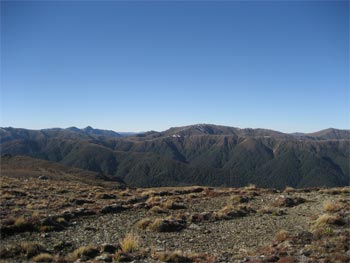
Light comes to us as daylight, moonlight, starlight, delight, sunlight, transcendental light, the light of consciousness in our eyes, the Light of God, the cosmic light that night fails to conceal, light itself as the quantum source, the matrix of the universe. Light comes to us in other ways as well …but moonlight is a good place to start.
Moments and memories, unsought and unwanted, often lodge in our minds, capricious and unreasonable, indelible like the scar on your arm that serves no purpose when you recall the bright blood, or the autumn leaves in your pockets after a forest walk.
Like this memory of moonlight. In my pre-disciple 1970’s I spent numerous and nervous days in the forests near my home, a wilderness of jumbled hills, deep gorges, sharp sandstone ridgelines, dark understories of mamaku fronds, kanuka groves and mountain beech. Shy deer, goats and wild pigs bedded down in the deep—shadowed, quiet valleys by day, moved up at nightfall to feeding grounds and transit ways, calling softly. They navigated along worn, remembered trails, cautious and listening, knowing the language of the night, along hilltops carpeted in luxuriant ferns, moss beds, coprosmas and flowering lacebark, past the lichen covered girths of wind-toppled forest giants, safe passage through big tracts of wilderness and wildness.
The rains of countless millennia had carved deep canyons out of the soft sandstones, gouged sheer sided ravines in the valley bottoms that gathered the power of every winter downpour, funnelled the trickles of watersheds and gullies and streambeds into a headlong mounting rush—lethal flash floods, nature’s periodic spring cleaning of its waterways, could eventuate on any gloriously fine day when a cloudburst in some far off catchment would send a surging brown wall of tossed logs, mangled flora, blocks of talus, the bones of fallen animals, mud and rainfall—deafening and pitiless—charging down the vertical walled canyons. There was no way out—in one minute a dry creek bed became your sudden grave.
I had been warned of this, a local farmers good advice, and knew the perils of ignorance. But in a hurry one night to exit the forest before darkness closed in, I bungled down a steep hillside of dense ferns and vines and slithered down a steep embankment into a gorge that promised a quick route out. Darkness came so suddenly, a black curtain falling across the visible world, and even an outstretched hand could not be seen. Twelve hours of night now, trapped in this perilous place. Later the dreaded rain came, rising waters, the mounting noise of run-off spilling into a dark tide. Inching up a steep embankment of tree roots with frozen fingers in the pitch black, up to a ledge twelve feet above the rising water, hearing my campsite and gear being swept away. A night of aching cold and imminent drowning, then after midnight a three-quarter moon comes suddenly, pale light illumining a scene of such beauty—waterfalls, glistening water, phosphorescent leaves, tendrils of mist, a collage of moonlight’s blanched yellows and the variegated shadows of night, this lovely earth.
And some unaccountable grace comes too, taken past exhaustion to a peaceful unconcern, bathed in moonlight, attentive and empty, a frail and breathing thing welded to the breathing earth, the conjoining arteries of water and blood, knowing one’s impermanence and the great calm it brings. Lying sodden beneath stars, staring at the cosmos through a canopy of trees, feeling the livingness of everything, and frailty, compassion, the moon’s consoling benediction, this strange rapture. Slipping away into some lovely balm of sleep.
Moonlight still reminds me of this, the fragile and simple miracle of life, the calm born out of fear, humbleness born of helplessness; and of reprieve that is grace-filled and gifted; and Earth’s harsh tenderness, the surviving of something perilous to go a little further on our wondrous journey….
An illumined being will know where there is light in boundless measure…. Just because he is in touch with the infinite Light, he will be able to bring down the infinite Light where the infinite Light is wanting. If there is an iota of light, he will bring down more light; if there is abundant light, he will bring down boundless Light. This is what he will do.
—Sri Chinmoy, Sri Chinmoy Speaks, Part 4
August, 1984 and I was sitting in the third row of a school assembly hall, P.S. 86 in Queens, New York. About to have an experience. It is the end of an evening of songs and performances and Guru, his back to us, faces the now empty stage. Around me others are meditating and I fix my eyes on Guru’s profile, feeling his stillness, his attunement to worlds I can only imagine. As though sensing our attentiveness he turns slowly, swivelling in his chair, looking at each of us in turn with that searching, penetrating concentration that sees everything about us but also brings forward our deepest sincerity, our most intense striving. My turn now as the subject of his focus—and I am astonished to see a wave of white light rushing towards me, a wall of energy like a breaking wave engulfing me, so visible and overwhelming that I am forced to grasp the edge of my seat with both hands for reassurance. The gaze goes past to others then returns—again the wave of vertiginous light rushing towards me, and I am a cork bouncing around in an ocean, breathless and amazed. Afterwards I cannot speak—an inner silence and stillness has banished all thought. Was this some kind of inner initiation? I don’t know much about such things, but here I am 28 years later, still remembering, writing it down.
Darkness there is
Light there is
You can choose
Whichever pleases you.—Sri Chinmoy, Andhar Ache Ache Alo Beche Nite Par (English translation)
This light is the light of dharma, the path of right living and spiritual choices and God-choosing. All these people coming to our meditation classes are more or less awakening to this light, which is why Guru always wanted us to be there for them, share our own inspiration and Guru’s legacy, our own frailties and imperfections notwithstanding. I often reflect on this before my meditation classes and think how all these people’s lives have been changed tonight because of this workshop, and how the consequences of this will spread out immeasurably into the universe. Each has veered tonight along a different pathway, made new plans, shuffled the lives of families, made phone calls that will impact on others, opened their lives to new possibilities that might be momentous—both for them and others—and reset the course of a fragment of history. You have dropped a pebble—perhaps a boulder!—into the cosmic pool and the ripples will spread throughout eternity. These revisions and omissions, additions and subtractions in the great landscape of humanity are all your doing—better do a good job!
What I do in lifting heavy weights is something really significant on the physical plane—bringing down light into inconscience. Metal is nothing but inconscience, and to bring down light into matter is a most difficult task. For light to enter into inconscience is a supreme achievement for humanity, because it is inconscience which always fights against light.
—Sri Chinmoy, My Weightlifting Tears And Smiles, Part 2
On Friday, October 11, 1985 at 11:30am at Aspiration-Ground, Guru’s weightlifting career really began in earnest with a one-arm 106¼ lb overhead lift. I have a fading photo of that long ago moment on my bedroom wall and years later, on one of Guru’s New Zealand visits, he passed by the adjoining room where this photo hung prominently on a wall. I mentioned to Guru that this was where my late wife Subarata had lived and he immediately went inside. Guru stood in front of this immortal picture—Subarata was there in the photo’s front row of disciple witnesses, and Guru had written our names and a lovely message all over it—and he lingered there for a long time. Then he looked at all the other weightlifting photos where light had descended into matter. Then he sat and meditated on what had been Subarata’s bed, summoning her, surrounded by dozens of her teddy bears and race medallions from her ultra days. It was a heart melting, poignant moment—and I knew and felt she was there.
Subarata turns up often in the inner world stories that recount Guru’s light-descending weightlifting career. Only days after her passing, her soul came to Guru in his home while he was seated at the overhead lifting apparatus. There is a wonderful video of this—Guru stops doing his two-arm lifts, smiles and then softly applauds, clapping his hands together in ovation. Then he begins to sing. Later when we are all viewing this, Guru tells us of this visitation, how her soul was dancing about the weights, and of their conversation. When she applauds Guru’s lifts, he applauds back, telling her how she too, unencumbered by the physical body, can also now accomplish these feats—which to her disbelief and surprise she does.
Avatars of course embody the light of God and are that light, bringing down through everything they offer—look at the myriad ways of our Master—the descending Grace.
Our members
Stories
First-hand experiences of meditation and spirituality.

My life with Sri Chinmoy
Namrata Moses New York, United States
It does not matter which spoon you use
Brahmacharini Rebidoux St. John's, Canada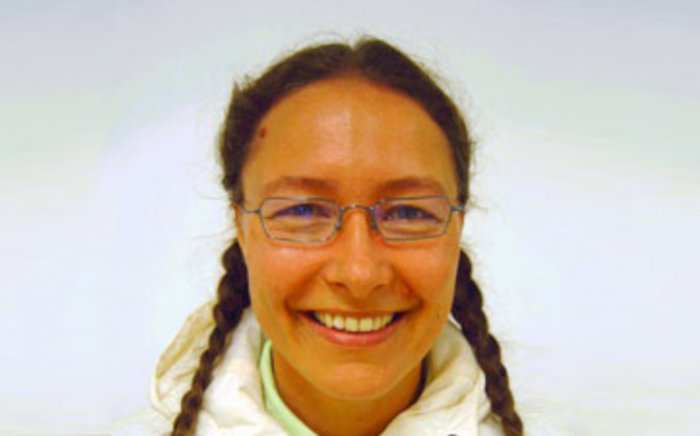
You only have to keep your eyes and ears open
Gannika Wiesenberger Linz, Austria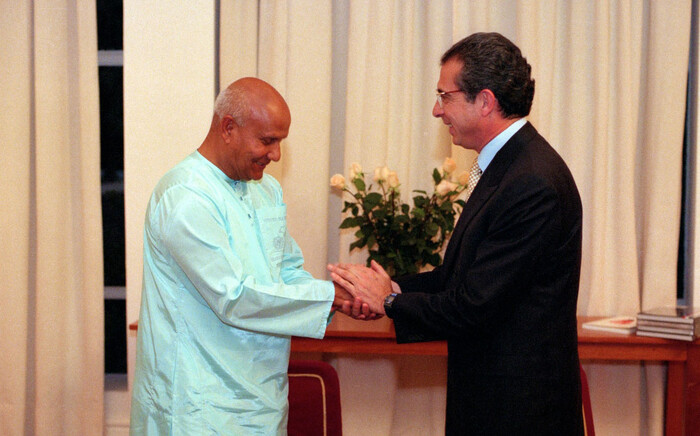
People see something in Guru and want to be part of it
Saraswati Martín San Juan, Puerto Rico
Akuti: a pioneer-jewel in our Centre
Akuti Eisamann Connecticut, United States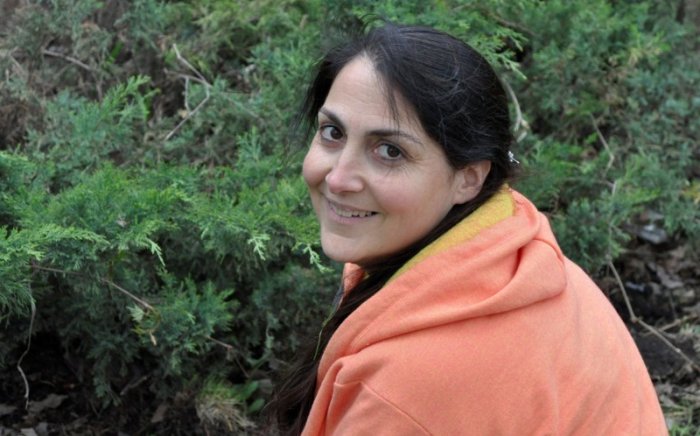
My inner calling
Purnakama Rajna Winnipeg, Canada
The day when everything began
Bhagavantee Paul Salzburg, Austria
10-Day Race: Staring into the Infinite
Patanga Cordeiro São Paulo, Brazil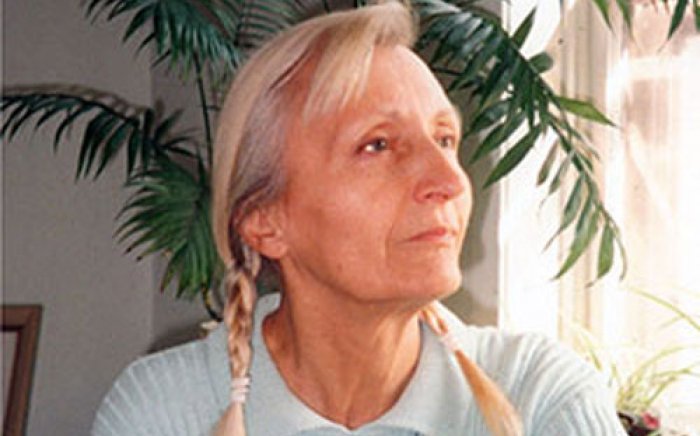
A 40-Year Blessing
Sarama Minoli New York, United States
Is it unspiritual to care about winning?
Tejvan Pettinger Oxford, United Kingdom
Spiritual moments with my grandmother
Patanga Cordeiro São Paulo, Brazil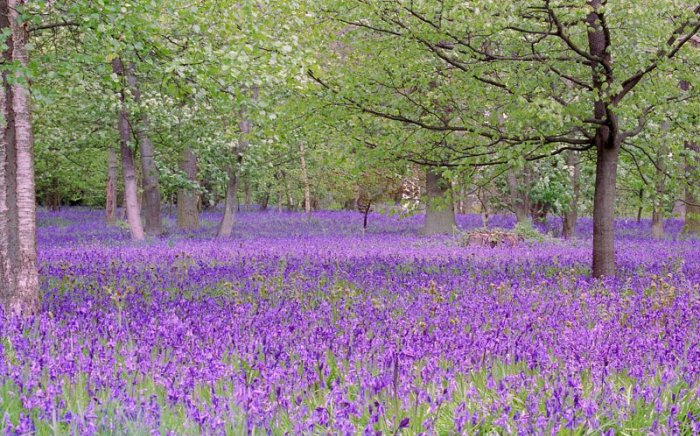
My Room
Preetidutta Thorpe Auckland, New ZealandSuggested videos
interviews with Sri Chinmoy's students
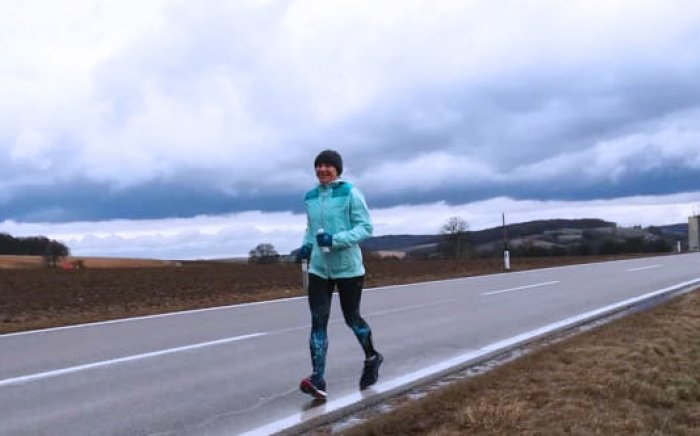
Progress-Pilgrimage: A 1200km run from Vienna to Paris
Shamita Achenbach-König Vienna, Austria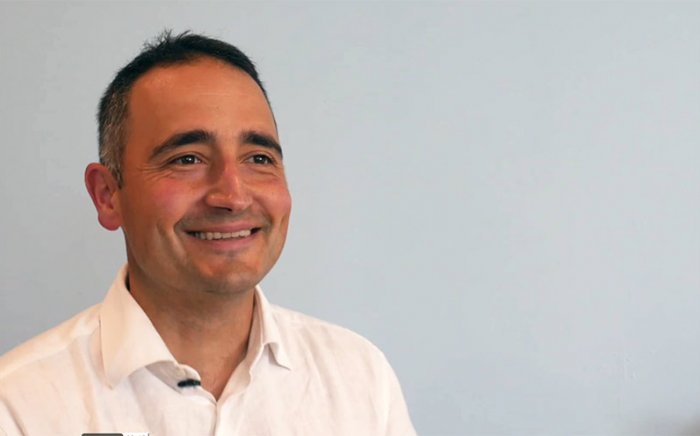
When I met Sri Chinmoy for the first time
Baridhi Yonchev Sofia, Bulgaria
My well-scheduled day
Jayasalini Abramovskikh Moscow, Russia
Starting a spiritual café
Toshala Elliott Auckland, New Zealand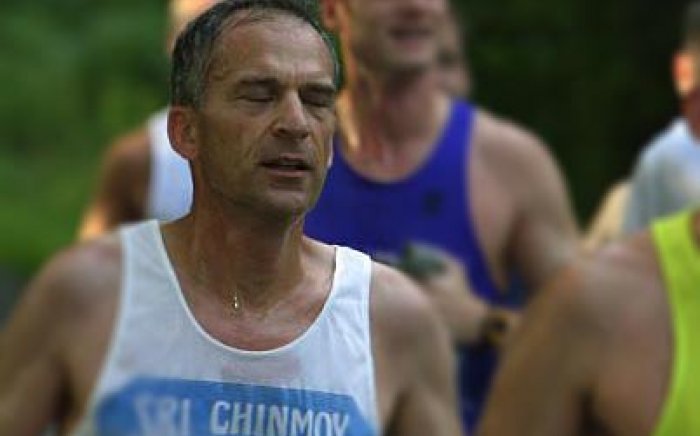
Self-transcendence in meditation
Kailash Beyer Zurich, Switzerland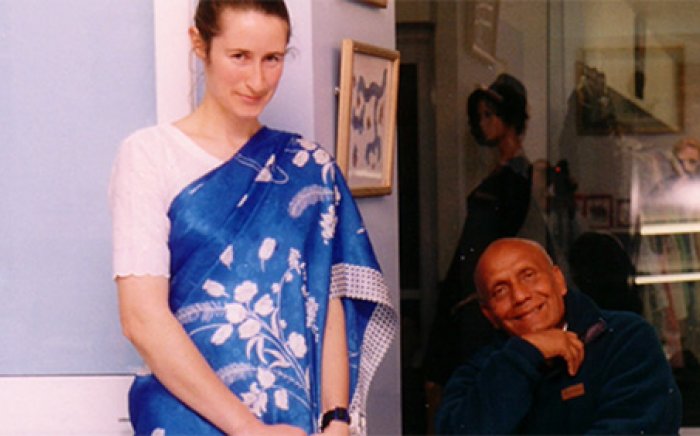
Humorous moments with Sri Chinmoy
Toshala Elliott Auckland, New Zealand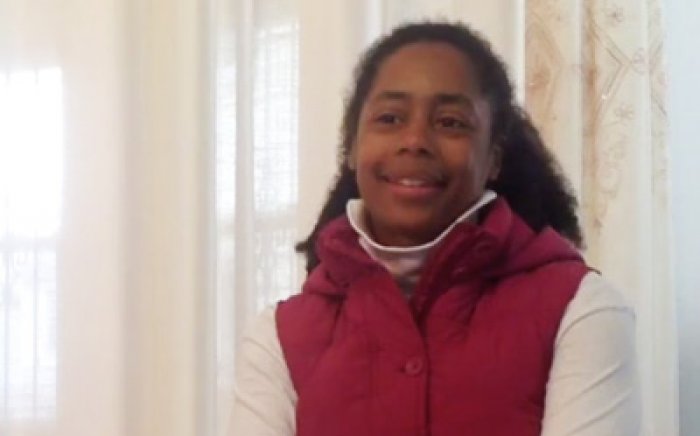
My first impressions of Sri Chinmoy's philosophy
Lunthita Duthely Hialeah, United States
Except where explicitly stated otherwise, the contents of this site are licensed under a Creative Commons Attribution-NonCommercial-NoDerivs 3.0 Unported License. read more »
SriChinmoyCentre.org is a Vasudeva Server project.








